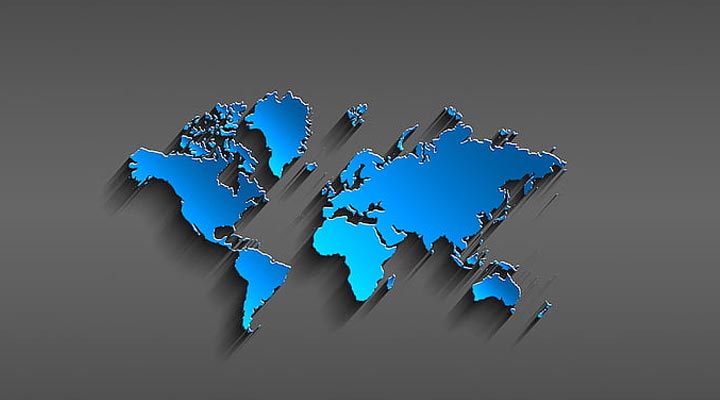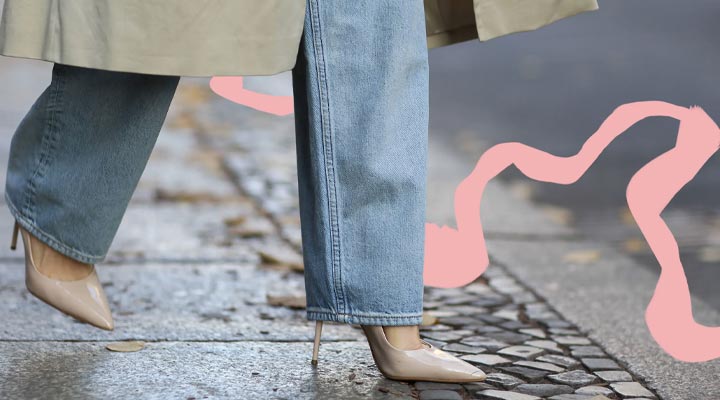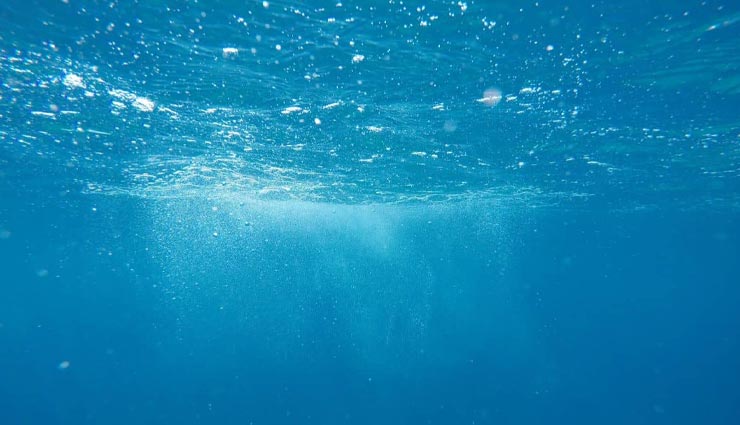How does the color blue make you feel? Some people remember the calmness of the sky and the sea; for others, the cold of ice and snow pours into their hearts. Believe it or not, our daily thoughts, feelings, and behaviors are strongly influenced by colors. Join us to read more about the psychology of blue paint.
Psychology of colors
We have known for centuries that colors affect the psychological state of humans. Goethe, a German poet and scientist, proposed the theory of color psychology for the first time in 1810. Since then, this idea has gained momentum, and researchers have begun investigating the effect of colors on how people think, feel, and behave.
The fantastic effect of color soon led to ” color therapy ” or “chromotherapy.” Now we know that color therapy and exposure to colored lights, visualization of specific colors, or massage with colored oils help to improve mental health conditions by creating a balance between the human body and mind.
The psychology of blue
The psychology of colors aims to identify their effect on people’s moods, emotions, and behavior. Close your eyes for a few moments and visualize a blue screen. The association of skies and oceans probably makes you think of 2 words “peace” and “silence.” But what exactly does the psychology of blue say? What does the blue color symbolize, and what do they say about it?
- According to studies, the blue color blinds the appetite. Have you heard the saying that if you want to lose weight, eat on a blue plate? This is the reason.
- The blue color is known to lower blood pressure and control heartbeat and calms the body.
- Blue color increases trust and confidence. For this reason, it is usually used in law enforcement uniforms. The purpose is to provide authority, comfort, and spirit.
- Psychologists associate the blue color with creativity and ideas, even in difficult situations. It seems that this color increases productivity due to its relaxing effects.
- Different types of blue colors have positive and negative psychological effects on us. The psychology of dark blue indicates that darker shades strengthen the power of problem-solving and decision-making in a person, and according to the psychology of turquoise blue color, lighter shades increase accuracy. Of course, this color has another use! Beverage-producing companies go for blue packaging to intensify the feeling of thirst and believe that this color increases human appetite.
Differences in the psychology of blue color in different parts of the world

The concept of blue color in psychology is not fixed everywhere in the world. Sometimes in other cultures, there are significant differences in the perception of this color, for example:
- The blue color in India is a symbol of truth, mercy, and love.
- The blue in Latin America signifies trust, peace, and mourning.
- In North America, blue represents calmness, confidence, and reputable businesses.
- The blue color in England symbolizes peace, dignity, and elegance.
- The blue color in Western European countries represents calmness, trust, responsibility, and loyalty.
- In Greece and Turkey, the blue color keeps away the evil eye.
- In ancient Egypt, the azure blue color was a symbol of heaven.
What does the color blue symbolize?
So far in the article, we have mentioned several times that blue symbolizes trust, responsibility, dedication, and courage. Around the world, most members of law enforcement agencies wear blue uniforms to instill a sense of security. On the other hand, it symbolizes peace, loyalty, and health in the workplace.
Blue personality traits
Optimism, love, sensitivity, and the desire to communicate with others are raging in people with blue personalities. These people are self-confident, loyal, and calm and like to be the founders of others’ well-being. On the other hand, they have a good balance with sadness, grief, and depression, take their responsibilities seriously, don’t like sudden changes, and are highly persistent and diligent.
- Confident: Blues usually stay calm in difficult situations and focus on their strengths instead of their weaknesses. The faith these people have in themselves encourages others to trust them.
- Honest: The blue character is always open and reveals his true intentions.
- Introverts: These people spend a lot of time analyzing their thoughts and feelings, don’t like to be the center of attention and don’t get along quickly.
- Loyal: Blues prefer solid and deep relationships to superficial relationships.
- Listener: They are good friends. Influential people in the life of blue people always have their support and encouragement.
- The perfect partner: Kindness, warmth, attention to the feelings of others, and the innate desire for open and honest communication make this person an excellent partner for life.
- Quick-tempered: It is difficult for such a character to let go of past events, and when his emotions erupt, he becomes moody and compassionate.
- Stubborn: The opinion of the blue character is difficult to change, and if someone tries to convince him of something against his wishes and beliefs, he becomes frustrated and bored.
- Reluctance: A blue person feels anxiety and hesitation in leaving their safe zone. He likes to always do everything according to a similar plan and avoids successive changes.
- Boring: The monotony and dullness of these people are due to their predictable personalities. The desire to maintain their safe zone does not allow them to be adventurous.
The psychology of blue color in fashion

The color of the clothes we wear reveals our inner secret. The blue color shows everyone how reliable we are. If you want to look decent and honest in a business meeting or an important interview, choose a blue color that day. This color conveys the feeling of loyalty, peace, self-confidence, and success to the audience at the first encounter.
The blue color in business psychology
Businesses such as financial and accounting companies that owe their credibility to people’s trust can use this color in their branding and advertising. Do not underestimate the influence of color in advertising and marketing. On the other hand, bright blue strengthens the sense of calmness and the spirit of responsibility in the workplace and is an excellent choice to motivate employees. Of course, using it excessively will make the environment cold and unfriendly.
The psychology of blue color in web design
What do you think is the reason for using the blue color on famous websites such as Facebook, Twitter, and Foursquare? According to surveys, blue websites look clear, clean, and modern and convey a sense of strength and security.
Combining blue with shades of gray enhances the modern aspect of the website, and lighter shades are used for health, wellness, and travel websites. National organizations, law firms, and sports teams usually use darker shades.
Psychology of blue color in marketing
Suppose you know a little about the psychology of colors in marketing. In that case, you know that using blue in the logo of social media is more than anything a sign of intelligence, communication, and trust, that is, factors that are extremely useful and effective in the marketing field. According to research, people visit stores painted with cold colors, such as blue, instead of warm colors, 15% more because it conveys strength, wisdom, security, and a sense of intimacy simultaneously.
The effect of blue color on the human body
The calmness of the blue color is not without reason. This color calms the heartbeat, lowers blood pressure, and cools the body. Even with its effect on the pituitary gland, it changes a person’s sleep pattern and calms their breathing. According to research, blue light can be used to strengthen memory and eliminate some bacteria.
The blue color in the world of spirituality
Eastern mystics associate two types of blue color with two chakras of the body. One is standard blue, and the other is indigo blue.
- Standard blue is the color of the throat chakra or visual, which is located in the throat and is also connected to the neck, hands, and arms. The throat chakra affects a person’s speaking and hearing ability and is helpful for spiritual communication. Beneficial gemstones for this chakra are turquoise, aquamarine, lapis lazuli, sodalite, quartz, Angelite, and aura.
- Indigo: It is the color of the third eye chakra or Ajna, which is located between the eyebrows and connects us with the unconscious. Amethyst, moonstone, and agility gemstones open this chakra and lead to clear vision, intuition, and evolution.
Different meanings of blue color
Apart from all this, some people analyze the meaning of the blue color based on the context in which it is used.
- The blue color in romantic matters indicates commitment and loyalty in romantic relationships.
- The blue color in daily life: Using blue color indicates peace and tranquility and sometimes has therapeutic benefits.
- The blue color in personality: People with blue characters show valuable qualities such as compassion, sympathy, honesty, imagination, and enthusiasm.
last word
Exploring the psychology of colors is an exciting task, but we must not forget that people’s reactions to different colors are entirely personal, apart from all these analyses! Past experiences are highly influential in shaping a person’s feelings and behavior. Therefore, it is unsurprising that some people consider it the color of grief and sadness, and others find peace and inspiration.
How does the color blue make you feel? Do you think you or those around you have a blue personality? We are waiting to hear your comments.
Warning! This article is only for educational purposes; to use it, it is necessary to consult a doctor or specialist.



